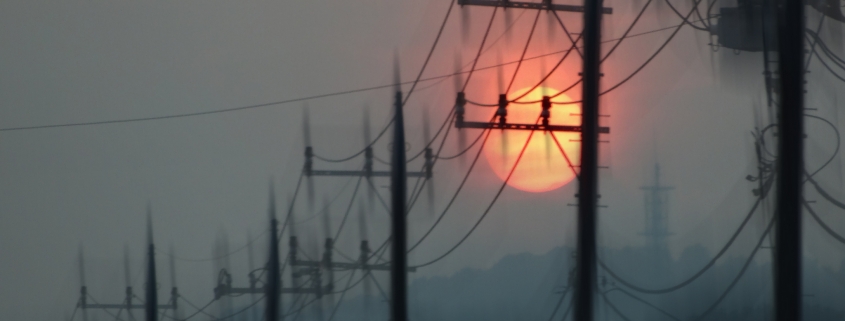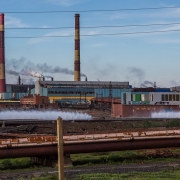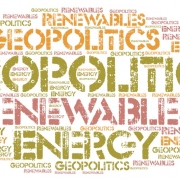Valuable conclusions from 2015: COP21 in Paris, Oil price drops and WEO 2015
The world has seen many developments in the international scene within 2015. Recession with drops in the oil prices, tensions in the Middle East and the COP21 that discussed the climate change action and the dynamic of the emerging green economies. With certainty, all these phenomena are intertwined and will affect future energy trends.
The COP21 in Paris
The COP21 took place on 7th-8th of December of 2015 in Paris. It was part of the Conference of Parties (COP), an initiative of the Climate Action and the UN Environment Programme organised annually. The forum is composed of stakeholders from the industry, governmental parties, NGOs and the UN that participate in the discussions for low carbon economies and climate mitigation. The aim of the Climate Conference in 2015 was to reach a global and legally binding agreement by keeping the global warming below 2°C.
Following the discussions, 195 Nations agreed in 12th December to act and fight against climate change by encouraging the investment for low carbon and resilient technologies. The key to the negotiations was the role of financial support that will help countries to achieve their national objectives. The next Conference of Parties (COP22) will be held at 7th -18th November 2016 in Marrakech, Morocco.
Falling oil prices
The oil industry has reached one of its deepest downturns in history and the recovery of the price is uncertain. So, what caused global oil prices to fall sharply? There is no clear explanation to this question, as the oil market is always unpredictable and only assumptions can be drawn here.
Currently, oil exploration and production suffer cuts in investment. Another simple explanation could be the mild winter in the Northern Hemisphere or the imbalance between demand and supply. Recently, the oil supply has been increased from the OPEC and non-OPEC countries. One of the OPEC producers, Iran, returned in the oil market after the lift of the international sanctions in January 2016 due to its nuclear program. This fact accelerated Iranian oil production and increased oil supply in the global market. On the other hand, the resilience from non-OPEC countries adds to the current low-price environment with the Gulf of Mexico and Canada continuing to invest in new projects.
The oil demand fell sharply, particularly in the United States and China, which resulted in the slowdown of global growth. Among the OECD countries¹, the US is cutting gradually the oil imports due to its domestic production in tight oil. However, the intensity of the oil production in the US will generate a gradual drop in the rich oil reserves, which will raise respectively the production cost in the mid-2020s. Next, the EU boosts the deployment of low carbon technologies. For the major emerging economies, the World Bank noticed weak growth prospects with the recent turmoil in China’s financial market, which led to lower demand for oil.
In an attempt to control the continuous fall of oil prices, the oil-producing countries are considering freezing their oil production at January levels and therefore focusing on the ongoing oil demand from the non-OECD countries (IEA, 2016). For March 2016, IEA’s Oil Market Report (OMR) marked a drop in the global oil supplies. The Non-OPEC production is estimated to fall further than its last monthly report. In the OPEC countries, the drop was balanced with losses followed by Iraq, Nigeria and the United Arab Emirates. For Saudi Arabia, the largest producer of OPEC, the supplies were steady. Additionally, the volume of the floating storages for crude oil was increased.
What the International Energy Agency forecasts for the energy resources
In the energy industry, the World Energy Outlook (WEO) is a useful guide for the examination of global energy trends. Each year, the International Energy Agency (IEA), an autonomous international agency consisted of 29 member countries, releases its WEO which provides an analysis of the energy market including scenarios for the supply/demand and its impact in the energy security, the environment and the economic development.
The main areas discussed in the WEO 2015 are the energy options in the OECD/non-OECD countries, the commitments of the COP21, the downturn in the oil prices and the role of the gas and coal in the future energy mix. First, the OECD countries are anticipated to boost their low carbon technologies. For this transitional period, natural gas will play a major role in the integration of renewables in the energy system. Yet, the difficulty of transporting gas in long distances or the deferred investment will block the long-term expansion of gas but will boost the development of renewables in the building sector and in the power generation.
By 2040, the energy demand will increase gradually in India, Africa, the Middle East and Southeast Asia. For China, oil, gas, coal and renewables will be the key energy resources to cover its needs. However, coal-fired power will experience a gradual decline owing to China’s commitment to implement a national emissions trading scheme in 2017. Furthermore, the structural shift of the Chinese economy in the service sector will cause a tremendous decrease in its energy demand. Finally, India will see rapid growth in energy consumption as the existing policies target to accelerate its modernisation. To achieve this, a high dependency on oil and coal in conjunction with the use of renewables will map the future energy scene in India.
Despite the fact that coal becomes a dominant energy option for Asia -while in Europe is expected to decline by 40% – a cost-effective captured and stored CO2 could be proved a useful resource for the future energy mix as the environmental policies become more stringent.
Regarding the oil prices, the WEO 2015 estimates that they might rebalance in 2020 with $80/bbl. while reaching again their highest levels in 2040. In general, the plunge in the oil prices does not have a positive impact on the consumers or the global market, as the worst scenario entails the risk of a sharp rebound in prices if investment dries up or might simply increase the reliance in the Middle East for imported crude oil. Last but not least, the low oil price scenario will deeply affect the energy transition to a low carbon economy; the cheap transport fuels will sideline biofuels and will hinder the efficiency improvements in cars, trucks, aircraft and other end-use equipment.
So far, policy preferences are based on cost trends. As the cost of oil and gas extraction increases, renewables become a more cost-efficient option. Of course, government subsidies will be a critical milestone in the further deployment of the renewables, which was also the main target of the COP21. The WEO 2015 concludes that the political targets set by the COP21 will not be sufficient to tackle climate change. What IEA proposes, in return, is stronger climate commitments over time by promoting energy efficiency for the industry and the transport sector, less coal-fired power plants and a dynamic increase of the renewables in the power sector by one third in 2030.
Photo: Spinster Cardigan, Sweltering (2013). Source: (flickr.com) | (CC BY 2.0)
Footnotes
[1] OECD countries:
The Organisation for Economic Cooperation and Development (OECD) consists of 34 member countries including Australia, Austria, Belgium, Canada, Chile, Czech Republic, Denmark, Estonia, Finland, France, Germany, Greece, Hungary, Iceland, Ireland, Israel, Italy, Japan, Korea, Luxembourg, Mexico, Netherlands, New Zealand, Norway, Poland, Portugal, Slovak Republic, Slovenia, Spain, Sweden, Switzerland, Turkey, United Kingdom, United States
Bibliography
Climate Action (2015) Home, Available at: http://www.cop21paris.org (Accessed 22nd March 2016)
EIA (2016) Short-term Energy Outlook, Analysis & Projections, 8th March, Available at: https://www.eia.gov/forecasts/steo/report/prices.cfm (Accessed 23rd March 2016)
IEA (2016a) IEA releases Oil Market Report for March, Oil Market Report, 11th March, Available at: http://www.iea.org/newsroomandevents/news/2016/march/iea-releases-oil-market-report-for-march.html (Accessed 22nd March 2016)
IEA (2016b) World Energy Outlook, About WEO, Available at: http://www.worldenergyoutlook.org/aboutweo/ (Accessed 23rd March 2016)
Krauss C. (2016) Oil Prices: What’s Behind the Drop? Simple Economics, The New York Times, 8th March, Available at: http://www.nytimes.com/interactive/2016/business/energy-environment/oil-prices.html?_r=3 (Accessed 23rd March 2016)
Krauss C. and Reed S. (2016) Iran Set to Pump More Oil Into Market Glut, The New York Times, 18th January, Available at: http://www.nytimes.com/2016/01/19/business/international/oil-iran-sanctions.html?_r=0 (Accessed 23rd March 2016)
OECD (2016) List of OECD Member countries – Ratification of the Convention on the OECD, Members and partners, Available at: http://www.oecd.org/about/membersandpartners/list-oecd-member-countries.htm (Accessed 23rd March 2016)
OECD and IEA (2015) World Energy Outlook, Executive Summary, IEA Publications, Paris, Available at: http://www.iea.org/Textbase/npsum/WEO2015SUM.pdf (Accessed 10th March 2016
Spinster Cardigan (2013) Sweltering, Flickr.com (CC BY 2.0), Available at: https://www.flickr.com/photos/84906483@N08/9491659555/ (Accessed 23rd March 2016)
UNFCCC (2016) Calendar 2016, United Nations Framework Convention on Climate Change Newsroom, Available at: http://unfccc.int/meetings/unfccc_calendar/items/2655.php?year=2016 (Accessed 22nd March 2016)
UNFCCC (2015) Historic Paris Agreement on Climate Change, United Nations Framework Convention on Climate Change Newsroom, Available at: http://newsroom.unfccc.int/unfccc-newsroom/finale-cop21/ (Accessed 22nd March 2016)
World Bank (2016) World Bank Lowers 2016 Forecasts for 37 of 46 Commodity Prices, Including Oil, Press Release, 26th January, Available at: http://www.worldbank.org/en/news/press-release/2016/01/26/world-bank-lowers-2016-forecasts-for-37-of-46-commodity-prices-including-oil (Accessed 23rd March 2016)








Leave a Reply
Want to join the discussion?Feel free to contribute!